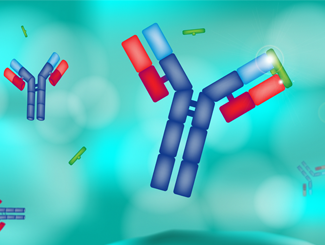 Immunohistochemistry and immunofluorescence are today becoming routine and a necessity for pathology laboratories, as new developments make these some of the best methods of disease diagnosis and treatment. The use of antibodies however, dates all the way back to 1890 with the first identified use of “antitoxins”. Emil Von Behring was a German physiologist who in the late 1800’s was performing experiments, injecting animals with diphtheria toxins. Once the animals developed immunity, he used their serum to create antitoxins, which contained antibodies. Once the system was perfected, it was able to be used on humans, winning Von Behring a Nobel Prize for his serum therapy work.
Immunohistochemistry and immunofluorescence are today becoming routine and a necessity for pathology laboratories, as new developments make these some of the best methods of disease diagnosis and treatment. The use of antibodies however, dates all the way back to 1890 with the first identified use of “antitoxins”. Emil Von Behring was a German physiologist who in the late 1800’s was performing experiments, injecting animals with diphtheria toxins. Once the animals developed immunity, he used their serum to create antitoxins, which contained antibodies. Once the system was perfected, it was able to be used on humans, winning Von Behring a Nobel Prize for his serum therapy work.
Once these antitoxins were created, it needed to be proved that the antibodies were reacting with antigens. Enter, Dr. Rudolf Kraus and the development of a precipitin test in 1897. In a precipitin reaction, a precipitate is formed when antigens and antibodies are together in the appropriate amounts to form crosslinks. This type of reaction is used to judge the concentration of antibodies in a serum. So, when increasing amounts of antigen are added to an antibody solution, increasing precipitate is formed, and then decreases creating a calibration curve used to quantify antibody presence.
The only reason this quantification is possible however, is thanks to Dr. Michael Heidelberger, sometimes credited with being the “father of immunology” though those titles are always up for debate. Dr. Heidelberger was an American scientist who worked on several drugs including ones for syphilis and African sleeping sickness but found his claim to fame studying polysaccharides. Heidelberger, in conjunction with Oswald Avery, was able to prove that antibodies were proteins, demystifying the magical serum. He was the first to really quantify the precipitin reaction by studying the nitrogen content of the precipitate. Perhaps his biggest contribution, at least in the eyes of histologists, is his use of dyes attached to antigens to distinguish antigen derived nitrogen from antibody derived nitrogen.
Others, including Dr. John Marrack in England, were also doing experiments on antibodies and antigens during the 1920’s-30’s. Marrack is known for using dyes to label antibodies, as Heidelberger had labeled antigens. Marrack’s work veered away from antibodies to focus more on nutrition in later years, working as the director of England’s Bureau of Nutrition and developing ideas about food production and distribution post WWII, probably knocking him out of the running for the “father of immunology” title. Dr. Heidelberger though lived to be 103, and continued to work in the lab right up until his death in 1991 by which point his initial work on antibodies was well on its way to becoming the modern IHC we see today.
The dye discoveries of Marrack and Heidelberger were further developed by Dr. Albert Coons’ fluorescent antibody labels in 1941 to provide the basis for what we now recognize as light microscopy and immunohistochemistry. Marrack’s dye was very faint when the antibodies precipitated in solution. Coons hoped to find a better way for antibody detection. After a few trials, and collaboration with Harvard colleagues, he settled on a fluorescein–isocyanate compound which allowed the antibodies to be shown as visibly fluorescent without disturbing antigen specificity. This compound also distinguished between tissue and antibody, where other previous trials using anthracene had not. Coons’ work allowed for the developed of enzyme labels to identify antigens at the electron microscopy level.
References:
https://www.researchgate.net/publication/267751939_History_of_Immunohistochemistry
https://pubmed.ncbi.nlm.nih.gov/1749380/
https://www.tandfonline.com/doi/full/10.1080/01478885.2020.1804234
https://www.sciencedirect.com/topics/agricultural-and-biological-sciences/precipitin-tests
https://academic.oup.com/sysbio/article-abstract/12/1/1/1620257?redirectedFrom=fulltext
https://www.sciencedirect.com/science/article/pii/B9780127544038500071
https://www.ncbi.nlm.nih.gov/pmc/articles/PMC2118068/
http://www.ihcworld.com/_intro/intro.htm#:~:text=Albert%20H.,identify%20antigens%20in%20tissue%20sections.
https://www.thelancet.com/pdfs/journals/lanres/PIIS2213-2600(16)00020-5.pdf
https://www.ncbi.nlm.nih.gov/pmc/articles/PMC2873989/
#Blog#IHCandMolecular#2020